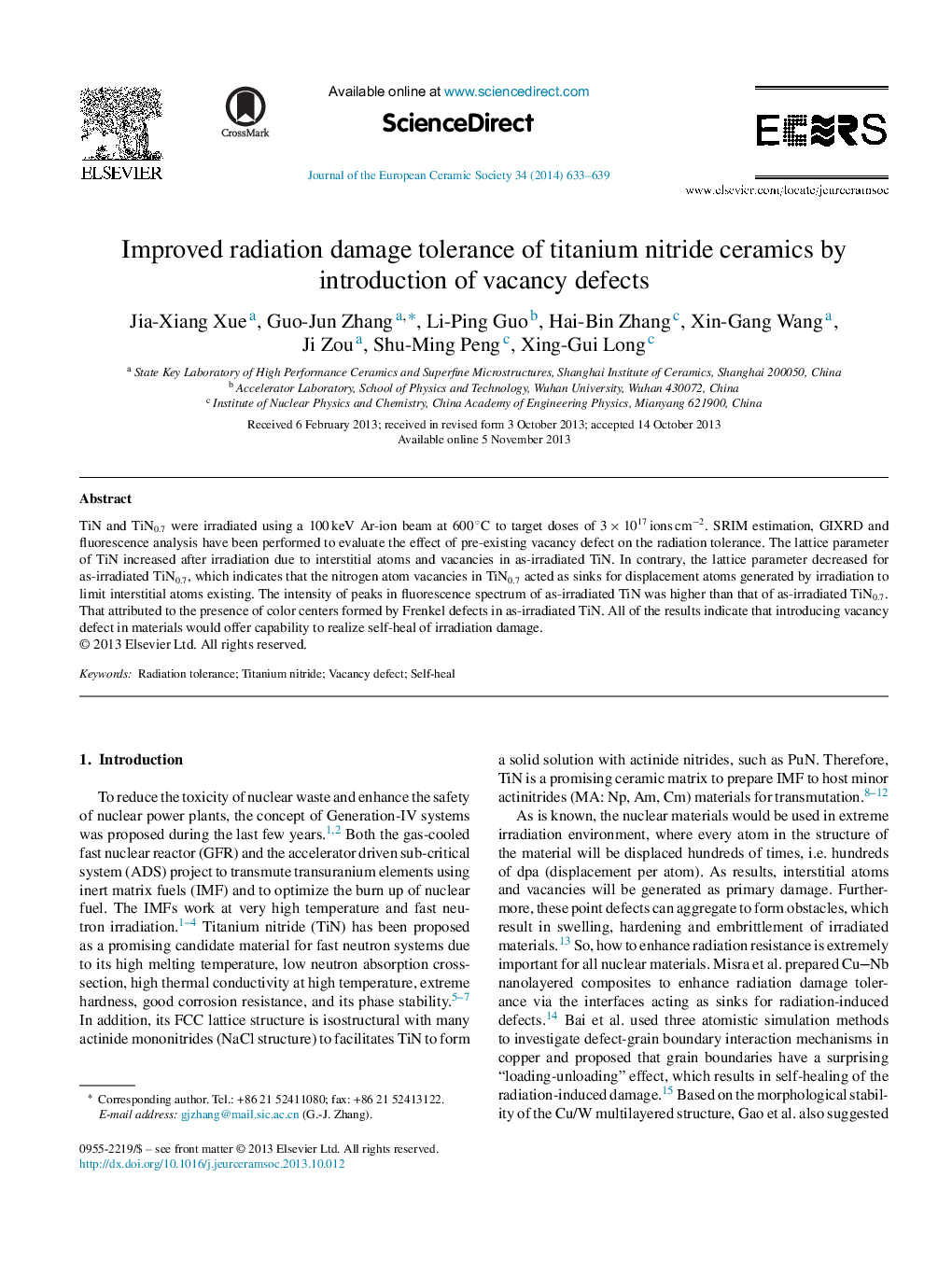| Article ID | Journal | Published Year | Pages | File Type |
|---|---|---|---|---|
| 10629524 | Journal of the European Ceramic Society | 2014 | 7 Pages |
Abstract
TiN and TiN0.7 were irradiated using a 100 keV Ar-ion beam at 600 °C to target doses of 3 Ã 1017 ions cmâ2. SRIM estimation, GIXRD and fluorescence analysis have been performed to evaluate the effect of pre-existing vacancy defect on the radiation tolerance. The lattice parameter of TiN increased after irradiation due to interstitial atoms and vacancies in as-irradiated TiN. In contrary, the lattice parameter decreased for as-irradiated TiN0.7, which indicates that the nitrogen atom vacancies in TiN0.7 acted as sinks for displacement atoms generated by irradiation to limit interstitial atoms existing. The intensity of peaks in fluorescence spectrum of as-irradiated TiN was higher than that of as-irradiated TiN0.7. That attributed to the presence of color centers formed by Frenkel defects in as-irradiated TiN. All of the results indicate that introducing vacancy defect in materials would offer capability to realize self-heal of irradiation damage.
Related Topics
Physical Sciences and Engineering
Materials Science
Ceramics and Composites
Authors
Jia-Xiang Xue, Guo-Jun Zhang, Li-Ping Guo, Hai-Bin Zhang, Xin-Gang Wang, Ji Zou, Shu-Ming Peng, Xing-Gui Long,
